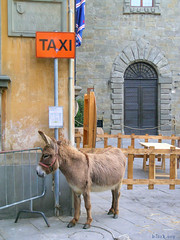Coincidentally enough at the press conference for this the 5th edition of Lucca Donna Jazz, held in the Headquarters of the patrons Fondazione Banca del Monte, the conversation spontaneously turned to this era of Lucca Jazz.
The board members reminisced their teenage pilgrimages to San Giorgio in the hope of a few notes from Chet’s last partner Ruth Young sang at the 2006 edition of the festival.
So don’t miss this week of top class concerts taking place in the San Girolamo Theatre starting February 21st and presented by famous TV music personalità and DJ Claudio Sottili. Thi is the 2009 Lucca Jazz Donna Festival organized by the Circolo Lucca Jazz, dedicated this year to Billie Holiday on the 50th anniversary of her death.
As a side event the 1984 Emmy and Bafta award winning film Billie Holiday – The Long Night of Lady Day by Jhon Jeremy will be shown at the Cinema Centrale on Thursday 19th February.
The festival aims to bring female jazz musicians to the forefront, whether they sing, play, compose or arrange jazz music. Two mid-week evenings are dedicated to the 2009 Award for young talent and feature, six female groups from Rome, Palermo, Puglia, Milan and Lucca.
The weekend events in Lucca feature Michele Hendricks, daughter of Jon of legendary trio Lambert, Hendricks and Ross, Eileina Dennis from the US with her gospel background and hit recording with Randy Crawford and Zucchero, Tiziana Ghiglioni known as La Signora del Jazz Italiano and the captivating voice of Ada Montellanico with her guest Max Ionata.
A special tribute to Billie Holiday entitled Our Way to Lady Day will take place at Teatro Alfieri in Castelnuovo Garfagnana on March 27th with the Ricciardi/Premazzi Quartet.
previous edition have hosted dramme Kim Thompson, just on the cusp of fame, saxophonist Lisa Pollard and violinist Regina Carter, to name a few.
The festival is a showcase for Lucca to be proud of, adding sparkle and International glamour to the town during the drab low season of february. Spread the word!
Last year these shows were a sell-out so we recommend you buy tickets in advance from Telerecord, Via Santa Croce 11/13. On sale from 10th february. More info regarding the programme and tickets at www.luccajazzdonna.it; segreteria-eventi@comunelucca.it
Tel. +39 0583.442444, or centro.po@provincialucca.it Tel. +39 0583 433435
Listening also in What’s On Central pages.



